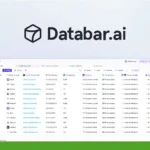URL monitoring is an essential aspect of managing a successful web presence. Whether you’re a blogger, content creator, or part of a marketing agency, understanding how to effectively monitor and index your URLs can make a significant difference in your online visibility and performance. This article will guide you through the fundamentals of URL monitoring, its importance, and how to get the most out of your monitoring tools. It’s worth reading if you want to ensure your web pages are always available, indexed, and performing optimally.
Article Outline
- What is a URL Monitor and Why Do You Need It?
- How Does a URL Monitoring Tool Work?
- What Features Should You Look for in a URL Monitoring Tool?
- How to Track Your URL Indexing Status?
- Using Google Search Console for URL Monitoring
- Automating URL Monitoring: Save Time and Effort
- Best Practices for Setting Up URL Monitoring
- How to Analyze URL Monitoring Data?
- Common Issues Detected by URL Monitoring Tools
- Integrating URL Monitoring with Other Tools
What is a URL Monitor and Why Do You Need It?
A URL monitor is a tool designed to track the availability and performance of your URLs. By using a URL monitor, you can ensure that your web pages are accessible and functioning correctly. This is crucial for maintaining a good user experience and optimizing your search engine rankings. A URL monitor helps you detect issues like downtime, slow response times, and indexing problems, allowing you to address them promptly and maintain a seamless online presence.
How Does a URL Monitoring Tool Work?
A URL monitoring tool works by regularly sending HTTP requests to your URLs and analyzing the responses. It checks for various parameters such as server response time, status codes, and content changes. If any issues are detected, the tool alerts you so you can take action. By monitoring your URLs in real-time, you can proactively manage your web infrastructure and ensure continuous availability and performance.
What Features Should You Look for in a URL Monitoring Tool?
When choosing a URL monitoring tool, consider features like real-time alerts, detailed analytics, and easy integration with other tools. Look for tools that offer white-label options, allowing you to customize the interface and reports. Ensure the tool can monitor multiple URLs and provide a comprehensive dashboard for at-a-glance insights. A good URL monitoring tool should also support automated monitoring to save you time and effort.
How to Track Your URL Indexing Status?
Tracking your URL indexing status is essential for understanding how your web pages are performing in search engines. Use tools like Google Search Console to submit your URLs for indexing and monitor their status. Regularly check the indexing status to ensure all your important pages are indexed and visible to users. If you notice any issues, troubleshoot them promptly to maintain your search engine rankings.
Using Google Search Console for URL Monitoring
Google Search Console is a powerful tool for monitoring your URLs. It provides detailed insights into how Google crawls and indexes your web pages. You can use it to submit sitemaps, track indexing status, and identify any issues that might affect your search engine visibility. Google Search Console also offers valuable data on search traffic and performance, helping you optimize your content and improve your rankings.
Automating URL Monitoring: Save Time and Effort
Automating URL monitoring can save you significant time and effort. By setting up automated checks, you can ensure continuous monitoring of your URLs without manual intervention. This allows you to focus on other important tasks while the monitoring tool takes care of tracking your URLs. Automated alerts notify you of any issues, enabling you to address them promptly and maintain optimal performance.
Best Practices for Setting Up URL Monitoring
When setting up URL monitoring, follow best practices to ensure effective tracking. Start by identifying the critical URLs that need monitoring. Configure the monitoring tool to check these URLs at regular intervals. Set up alerts for different types of issues, such as downtime, slow response times, and indexing problems. Regularly review the monitoring data and adjust the settings as needed to optimize performance.
How to Analyze URL Monitoring Data?
Analyzing URL monitoring data is crucial for understanding the performance of your web pages. Look for trends and patterns in the data to identify any recurring issues. Use the insights to optimize your website and improve user experience. Pay attention to metrics like response time, server status codes, and content changes. Regularly review the data and make necessary adjustments to ensure continuous availability and performance.
Common Issues Detected by URL Monitoring Tools
URL monitoring tools can detect a variety of issues that might affect your web pages. Common issues include downtime, slow response times, and indexing problems. These issues can impact your search engine rankings and user experience. By using a URL monitoring tool, you can promptly detect and address these issues, ensuring optimal performance and visibility for your web pages.
Integrating URL Monitoring with Other Tools
Integrating URL monitoring with other tools can enhance your monitoring capabilities and provide a comprehensive view of your web performance. For example, you can integrate your URL monitoring tool with Google Search Console to track indexing status and search performance. You can also integrate with analytics tools to gain deeper insights into your web traffic and user behavior. By combining different tools, you can optimize your web presence and achieve better results.
Summary
- URL Monitor: Essential for tracking the availability and performance of your URLs.
- Monitoring Tool: Regularly sends HTTP requests to check server response time, status codes, and content changes.
- Features: Look for real-time alerts, detailed analytics, and easy integration with other tools.
- Indexing Status: Use Google Search Console to submit URLs for indexing and monitor their status.
- Automation: Set up automated checks to save time and effort.
- Best Practices: Identify critical URLs, configure regular checks, and set up alerts for different issues.
- Data Analysis: Look for trends and patterns to optimize your website and improve user experience.
- Common Issues: Detect downtime, slow response times, and indexing problems.
- Integration: Combine URL monitoring with other tools for a comprehensive view of your web performance.
By following these guidelines, you can effectively monitor and optimize your URLs, ensuring continuous availability and optimal performance for your web pages.



